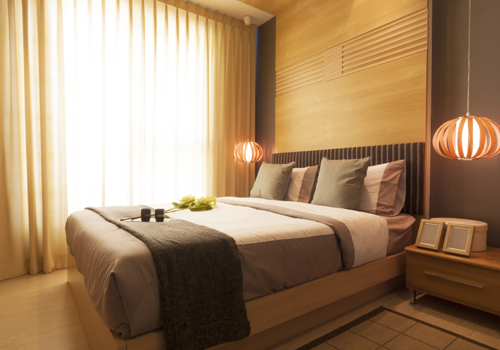
East-facing rooms receive a soft dose of sunshine in the morning, but as the sun rises, you will also notice a lot of shadows. The sunlight is clear, bright and not particularly warm. As the morning moves towards noon,the room will be bright without much warmth and will have a cooler look.
The light in east facing rooms can appear to be a slight blue. It would be great to use blues that have a touch of green in them for a softer and more inviting look.Greens that have a hint of yellow will work well to infuse some warmth.
You can use colours that are a bit warmer coloured and less neutral. You can use a beige base, but if you have some good 'colour' mixed in, it will help to fight off the grey light of the room.
If you go for cool paint colours or grey neutrals, you should opt for warm accents and texture to your room to add some balance and visual warmth.
To create as much light as possible but still retain some warmth, look at pale greens, which will come alive in the morning sunlight. Since the light will undergo changes throughout the day, it is good to pair these with a darker tone on woodwork or furniture so that the walls appear lighter in contrast. If you want to use a white, remember to choose one with a green or blue base.
It is always a good idea to run a test with your chosen colour schemes. We recommend painting out a sample onto an A4 paper or card to see how the colour works in your living space, move it around the room and check the colour at different times of the day so you can see how the colour is affected by the light. Don't paint the colour directly on the wall as it won't be the actual colour if the existing wall colour isn't white. Good luck!